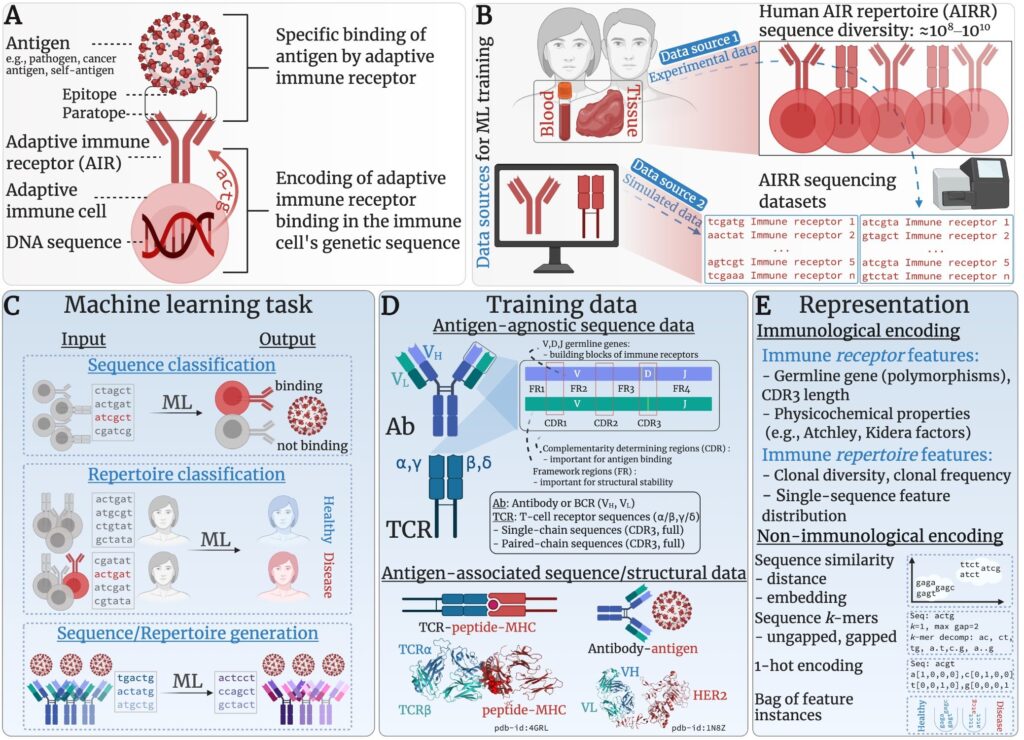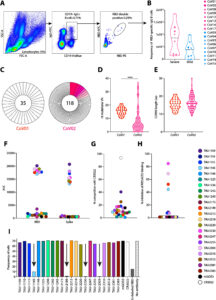Blog
iReceptor Plus partners published a review article on mining AIRRs for biological and clinical information using machine learning
26/01/2021
By Judy Siegel-Itzkovich
How does the brain learn? When two neurons fire together, sending off impulses simultaneously, the synapses between them grow stronger and learning takes place.
How do computers learn? “Machine learning” (ML) — an application of artificial intelligence – involves the study of computer algorithms that automatically improve through experience. After the machine creates a model based on train data, it can make predictions or decisions on new data without being explicitly programmed to do so.
For simple tasks assigned to computers, humans can program algorithms to tell the machine how to execute all steps required to solve a problem. If the task is more complicated, human programmers can help the machine develop its own algorithm instead of specifying every needed step.
ML can be applied to reveal crucial biological and clinical knowledge from adaptive immune receptor repertoires (AIRRs), which are natural biosensors of health and disease. ML contributes to the design of diagnostics and therapeutics, but ML on AIRRs is hindered by the lack of disease – and antigen-binding-labeled data. As a result, AIRR-optimized ML approaches are required.
A new research article entitled “Mining adaptive immune receptor repertoires for biological and clinical information using machine learning” has just been published in the journal Current Opinion in Systems Biology by three iReceptor Plus Partners: Victor Greiff of the University of Oslo, Gur Yaari, who is the iReceptor Plus coordinator from the Bar Ilan University and Lindsay Cowell of the University of Texas Southwestern Medical Center.
Machine learning is of fundamental importance for mining adaptive AIRRs stored in the iReceptor plus repository for biological and clinical information. The review article discusses current progress and remaining challenges in AIRR machine learning research.
Adaptive immune receptor repertoires (AIRRs) are natural biosensors of health and disease. ML can reveal crucial biological and clinical knowledge from AIRR sequence and structural data.
The adaptive immune system stores invaluable information about current and past immune responses and may serve as an ultrasensitive biosensor. “Given the immune system’s critical role in a wide variety of diseases, this has broad implications for biomedicine, they continued.
Machine and deep learning are being leveraged to decipher how information is encoded in adaptive immune receptor repertoires to enable prediction from adaptive immune responses and fast-track vaccine, therapeutics and diagnostics development.”




